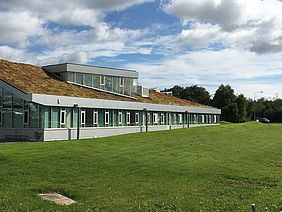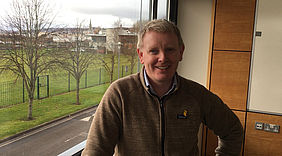This week we would like to present our last SMARCTIC project partner: Donegal County Council (Ireland), a local authority which has responsibility for many different types of public buildings throughout its jurisdiction (a range from large Public Service Centres to libraries and other Community related structures).
Energy management has always been a key objective for Donegal County Council, in an ongoing effort to reduce costs and use energy more efficiently. Some of the mentioned buildings have already successfully installed energy management systems. "Our aim is to develop a system which will equip the Council to apply a more uniform approach to energy management throughout all its public buildings", explains Daragh McDonough, SMARCTIC partner at DCC. This will consist of low power, long range, and secure connected IoT devices with geolocation features, that can penetrate dense building material to monitor municipal operations and energy usage. Visualization tools and AI will facilitate building managers to optimise indoor environments to improve conditions for workers and increase energy efficiency in local authority buildings.
Daragh makes clear that SMARCTIC will enable DCC to develop a more cohesive energy management strategy, by developing a smart pilot that monitors the indoor environment in all public buildings or any community related buildings. Apart from the learning and knowledge, the practical benefits will be to reduce energy costs, identify alternative renewable energy sources and improve working environment.
"Each region is participating in this project by developing a prototype adapted to a unique aspect of smart energy management. This approach reduces duplication of effort and should enable Donegal County Council to benefit from the knowledge gathered by the other project partners". Daragh highlights that the geographical distribution of the project partners also ensures that they will see how other countries with more extreme weather patterns approach the area of smart energy management, and this will give DCC added insight.
Asking about what the Council is expecting to achieve by the end of the project, Daragh mentions that, "in three years’, time, we would hope to have developed a model which will enable a User to have visual oversight how a cluster of public/community buildings consume energy using smart technology. This should identify energy usage patterns considering seasonal factors and any other identified constraints". The outputs from this system will enable the User to make better informed decisions concerning how their particular building consume energy when where this energy is sourced. "This project will be of interest to anyone who is involved in managing their energy costs, alternative energy sources, renewable energy and energy consumption. It will also demonstrate efficient and practical use of IoT technologies and AI in a specific field", concludes Daragh.



